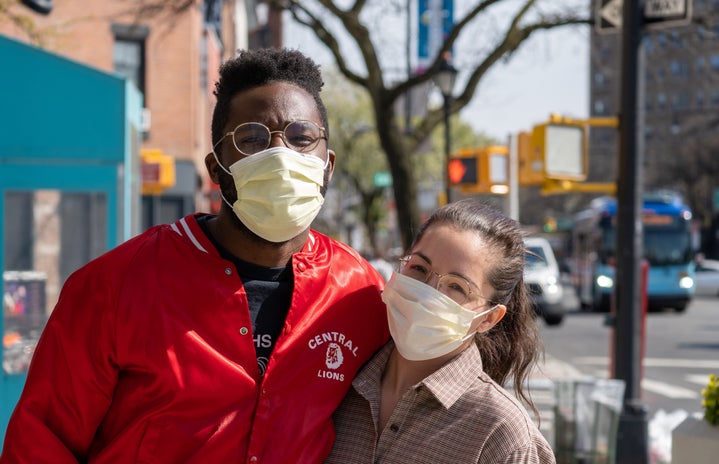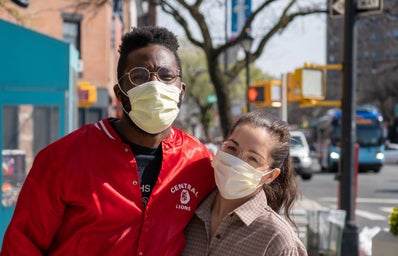Where I live in St. Petersburg, houselessness has always been a significant and ever growing issue. In the past, I would consider it normal to be asked for money a few times a month when visiting populated places like the grocery store or gas station. Lately, I have been seeing houseless people asking for help almost every time I drive around the city. As a result of the Coronavirus Pandemic, unemployment has skyrocketed, which has led to an increase in people who are reaching out for help. Last summer, I worked with Florida residents on their claims for reemployment assistance, and I was shocked by the sheer number of people struggling. It was gut wrenchingly common to hear from people who were skipping meals and foregoing important medications in order to pay for rent. Because of this, I started thinking about the ways I can help houseless people on an individual level. I know the impact of my efforts alone are small, but I think they are important. If you are reading this article in a comfortable safe place like your home, chances are that your living conditions are significantly better than all the houseless people I have encountered these past few months. I believe it is everyone’s responsibility to pay it forward and foster a more compassionate society. Helping houseless people is one of many ways to contribute to a kinder community. The following list will share some ways to help.
Ask what the person needs
The most important thing to remember when helping a houseless person is to directly ask what they need, or if you have something prepared, ask permission to give it to them. This is a practice that should be encouraged and normalized. If you are in a public place and feel safe enough to do so, speak to the person directly and ask if there is something specific they need. If you have something prepared with you, ask if they want the item before handing it to them. This way you can respect their personal boundaries and autonomy, and avoid giving away anything that would be a burden to carry or store.
Asking what a person is looking for will also help you to meet their needs more effectively. You might assume a person standing outside of a grocery store is looking for food, when in reality, they could be looking for someone to buy them a toothbrush. If you are in an area with restaurants and grocery stores, you can offer to buy someone a meal. It is respectful to ask a person what their needs are instead of making a decision based on your own assumptions about their condition.
Create Care Packages
You never know when someone will ask for your help. Traveling with care packages is a great way to be prepared. To make a care package you will need a few key things: a bag, some hygiene items, and nonperishable foods. I recommend using a gallon-sized plastic bag with a zipper. The zipper will keep the bag in good condition to be reused, the sealed plastic will protect from rain and water damage, and the gallon size will allow room for other essential items to fit inside.
Inside the bag, you can include anything you think is essential such as hygiene products and nonperishable foods. Below are examples of each to include:
-
Nonperishable foods: water, beef jerky, protein bars, unsweetened applesauce, crackers, dried fruits, packs of tuna salad with crackers, mints, etc.
-
Personal hygiene: Toothbrush, toothpaste, nail clippers, band aids, comb/small brushes, maxi pads, hand towels, lotion, tissues, wipes, chewable multivitamins, etc.
-
Miscellaneous: Quarters for laundry, socks, sunscreen, first aid kit, utensils, reusable water bottles, handwritten notes/cards, etc.
Some important things to note:
-
Avoid foods that are hard to chew such as nuts, gum, and nutty protein bars
-
Avoid giving a person more items than can fill a gallon sized bag. Giving a person too many items can become a burden for them to carry and/or store.
-
A good tip is to get smaller sized hygiene products from the travel section of your local convenience or grocery store.
-
-
DO NOT include alcohol-based hygiene products such as hand sanitizer and mouthwash as they can be harmful to a person if they struggle with addiction.
-
DO NOT give someone expensive items such as jewelry, designer shoes/designer jackets, etc., as it can make them a target for thieves who can cause them harm.
-
Lastly, ask a person if they want a care package before you hand it to them and drive/walk away. This is part of being respectful and as mentioned before, part of effectively meeting someone’s needs. Simply say something along the lines of: “Hi! I have this bag with me, and inside they are some things such as x, y, and z, would this be helpful to you?”
Give Out Gift Cards to Nearby Stores
Giving someone a gift card is a great way to empower them to get the things they need at the time they need them. It is also a great way to keep “food” with you at all times. If you decide to give someone a gift card, it is important to note that approximately 35% of houseless individuals have struggled with substance abuse, so keep this in mind when choosing a store (Sunrise House, 2020). You would never want to enable or worsen a person’s struggle with addiction by giving them the option to buy alcohol or over-the-counter drugs. With that in mind, it is best to give out gift cards for local chain or fast-food restaurants. Pick a gift card for an establishment that is accessible, does not serve alcohol, is inexpensive, and allows a person to order food to-go. You should also be mindful of the restaurant and whether they offer healthy and nutritious food options. Just use your best judgement for this one!
Volunteering
Another great way to help with houselessness is to volunteer. This is a great option if you don’t have the means to purchase gift cards or items for care packages. Volunteer opportunities vary from city to city, but they are usually easy to find and involve events such as food drives, organizing care packages for distribution, serving at a soup kitchen, etc.
*In this article, I chose to use the term ‘houseless’ instead of ‘homeless.’ Houseless is a more accurate term for someone who does not have adequate shelter. Home means something different to everyone and does not always equate to housing. For some people, home is a feeling that is connected to personal relationships, family, religion, etc.
How to get help if you are experiencing homelessness: https://endhomelessness.org/how-to-get-help-experiencing-homelssness/
South Florida and Central Florida homelessness helpline: 855-92-HELP-1
National Runaway Safeline for homeless youth: 1-800-786-2929
Sources
Myers, J. (2013). 10 Dos and don’ts in loving homeless people. Redeeming life. https://redeeminggod.com/10-dos-and-donts-in-loving-homeless-people/
Portland rescue mission. (2016). Pack a care kit to help someone who is homeless. https://www.portlandrescuemission.org/get-involved/learn/pack-a-care-kit/
Sunrise house. (2020). Addiction among the homeless population. Addiction demographics. https://sunrisehouse.com/addiction-demographics/homeless-population/


